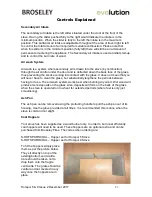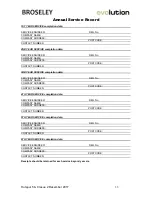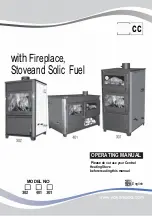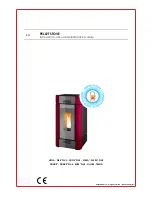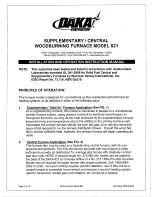
Hotspur 5 & 9 Issue 2 December 2017
18
Ventilation Requirements
Commissioning Testing
Once a suitable flue draught has been established, and to ensure that during start-up
operation and refuel that spillage does not occur, it is advised to carry out the following
3 step spillage test procedures and record the results using the On Site Verification of
HETAS Spillage Test Procedure Form.
Before commencing the commissioning process, it is important for the installer to
ensure the following have been met;
The installer has read and understood HETAS Technical Note HETAS_TN_0020
v1.0 and has taken account of the guidance contained within the appliance
manufacturer’s installation instructions.
A relevant risk assessment of the property and appliance has been carried out
The chimney, hearth and appliance is installed in accordance with the
requirements of ADJ and their suitability/soundness has been verified as
compliant
The air supply duct has been installed in accordance with the specification
detailed by the appliance manufacturer and within manufacturer instructions
A CO alarm has been fitted
Step 1
– Cold Spillage Test – Appliance Door Shut.
1. Close all external doors and windows, internal doors to the room the appliance is
located in and ensure all openable ventilators are closed and any devices that extract
air from the dwelling are off.
2. Preheat the flue by lighting a small fire using kindling, a blow lamp or electric heater.
3. Light a small smoke pellet (5m3/30 sec), place into the appliance and shut the
appliance door. All air-controls should be set to their maximum open position.
4. Check that all of the smoke enters the flue and none comes back into the room
through any part of the stove, connecting flue pipe or air supply duct.
Note: If visible smoke enters the room then repeat the flue preheat detailed in point 2
above, to generate additional flue draw. If the test still fails, progressively open a
window in the room the appliance is installed. If the flue starts to draw the smoke, this
will indicate a fault due to air starvation and the appliance is not being provided with
adequate air for the flue to function correctly. Note the additional area of ventilation
required and add permanently open ventilation into the room by that amount to correct
the problem.




















